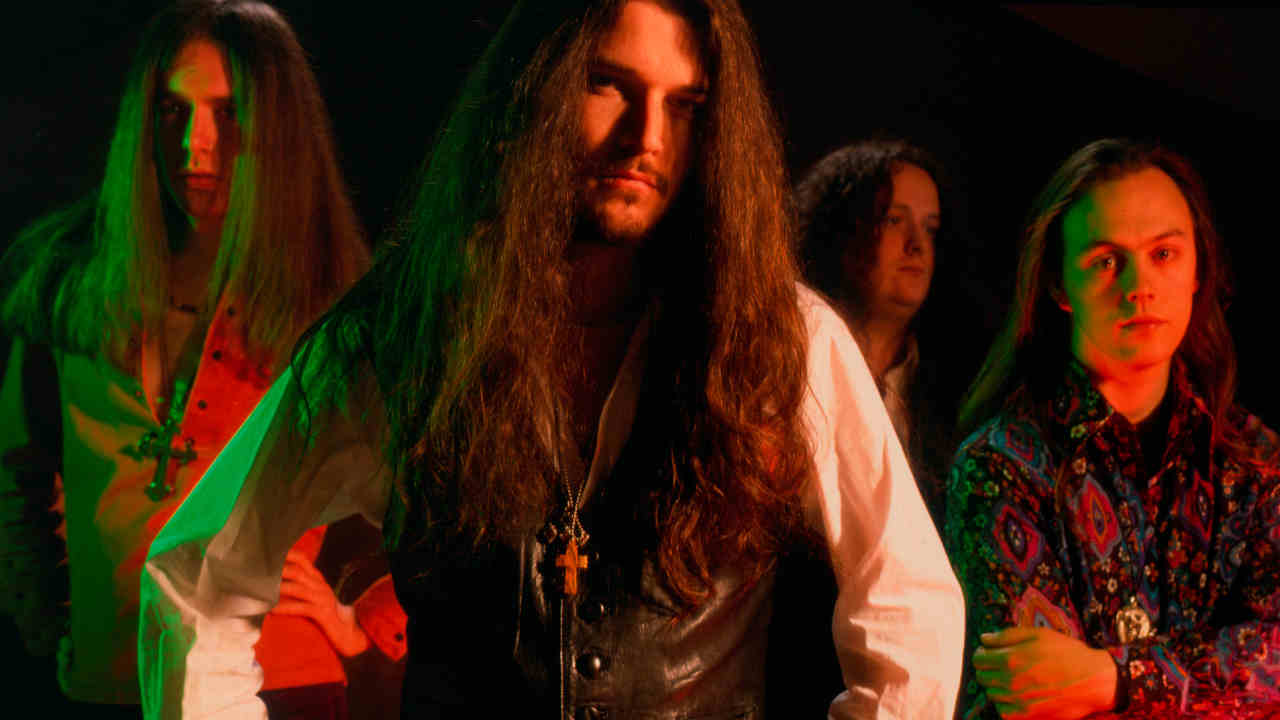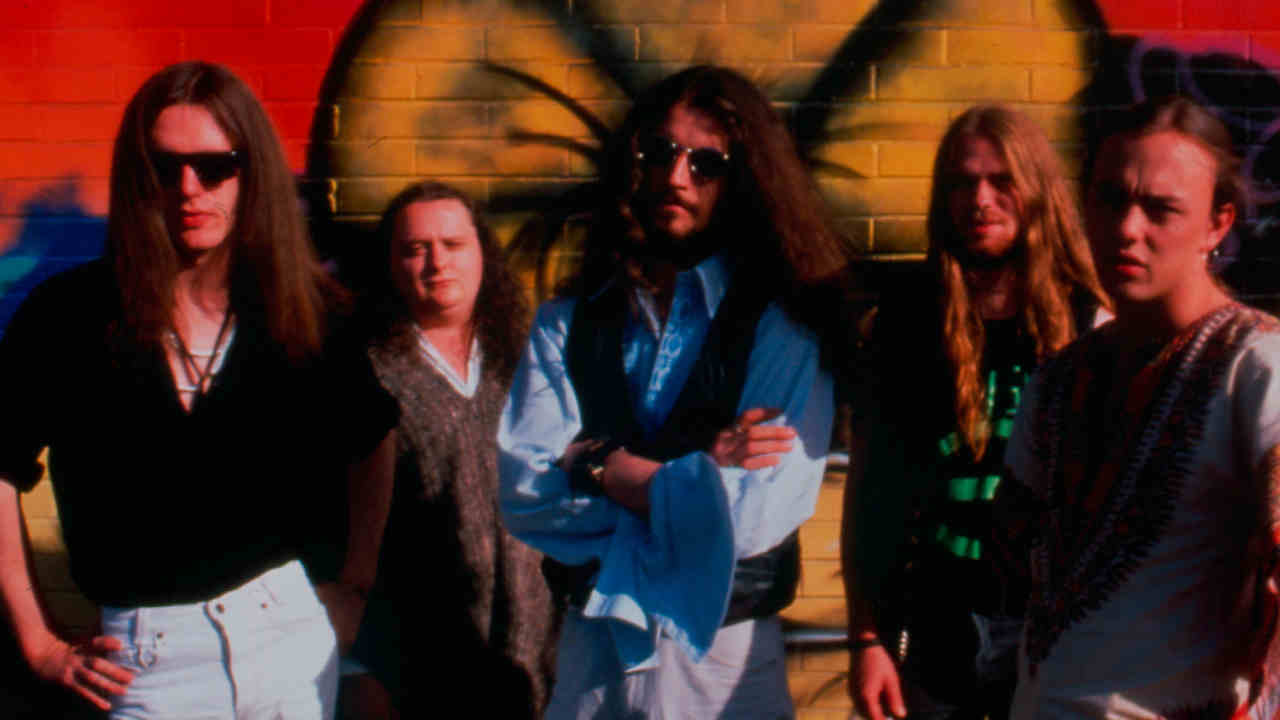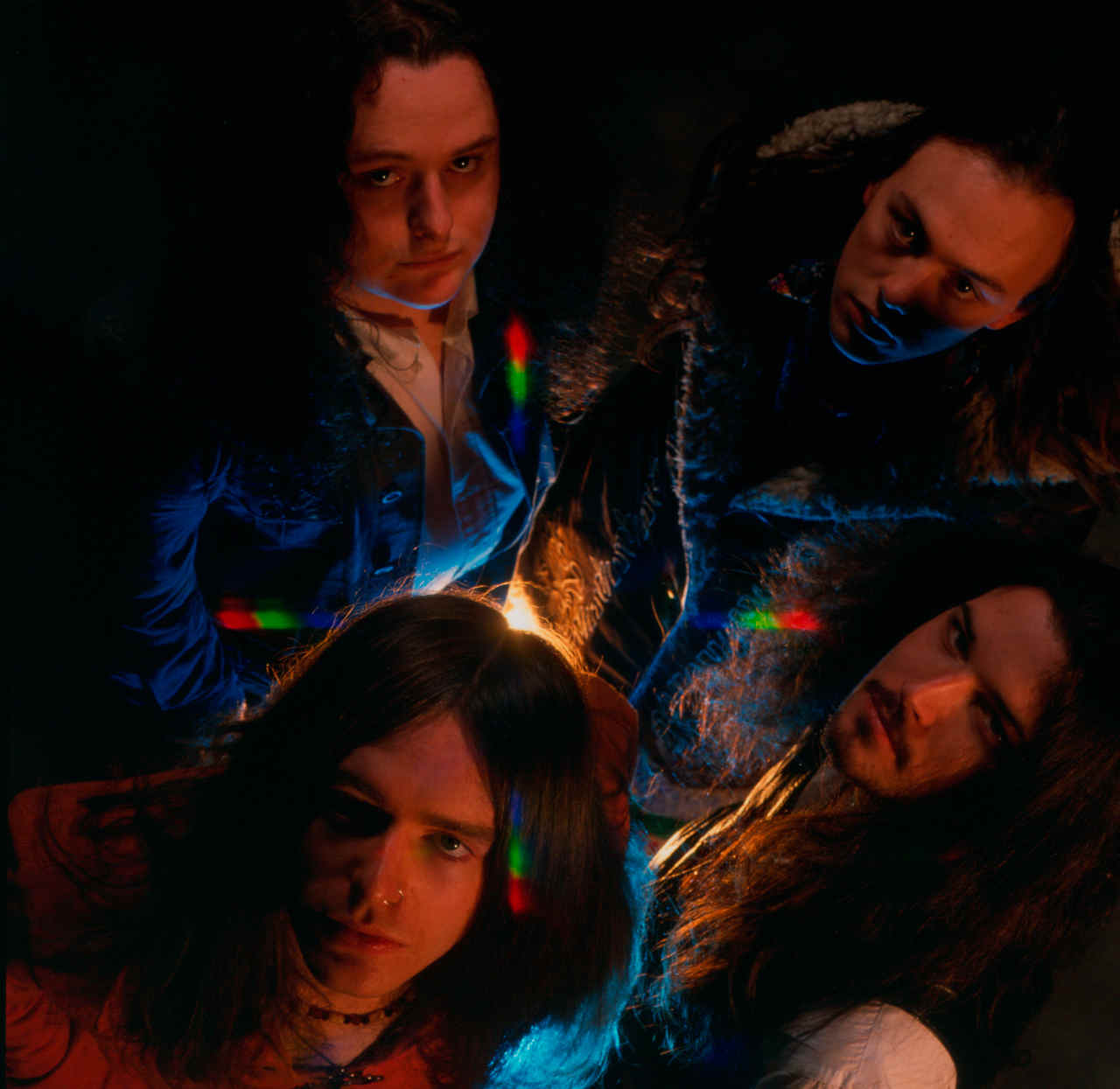
Formed by ex-Napalm Death singer Lee Dorrian, Cathedral were one of the most influential doom metal bands of the 1990s and 2000s, releasing a string of albums that inspired subsequent generations before their split in 2013. In 2005, Dorrian looked back at the band’s 1991 debut album Forest Of Equilibrium, the record that reinvented the doom scene into the 1990s.
It wasn’t exactly a recipe for success. It’s 1989, and vocalist Lee Dorrian quits Napalm Death as the grind gods are in danger of becoming a cause celebre for trendy mainstream media husks out for a five-minute noise fix. So, what does a man do when he’s cashed in the future? Simple. If you’re Dorrian you start up a doom band too out of sync with the times to ever risk getting lost in the fashion maze.
“I actually wanted to do something more doomy while still in Napalm Death,” recalls the frontman. “In fact, I was keen to introduce slower elements into our music, but the rest of the band wanted to go more death metal.”
Cathedral could have been a very different beast had certain plans happened – plans involving none other than Arch Enemy/Spiritual Beggars guitarist Mike Amott.
“Around Christmas 1988, Mike turned up at my mum’s flat in Coventry. It seems that [Napalm Death drummer] Mick Harris had invited him over to audition for the band without telling me. So, Mike’s on my doorstep, telling me that he was here for the audition, and I’d no clue what he was on about. He ended up staying at my mum’s place, and we did talk about doing a doom side project. It would have been him, me and Napalm Death’s bassist Shane Embury. But nothing came of it. And, when I left, I had no interest in doing another band. I was so disillusioned with the corrupt business side of things. But then, I met Griff.”
‘Griff’ is Mark Griffiths, who worked at the time for Carcass. “He was their lighting guy, and I got to know him through a friend of mine who drove them around. We discovered both of us loved bands like Pentagram and Trouble.”
Dorrian also met Garry ‘Gaz’ Jennings, then guitarist with Brit thrashers Acid Reign, who also shared a passion for this music.
“We got chatting at a show in Leicester, when Acid Reign supported Nuclear Assault – the latter’s bassist Dan Lilker introduced us to each other,” says Dorrian. “Both bands were supposed to go to Europe that night. But Gaz wrote the rest of Acid Reign a letter, resigning!”

Eventually, the trio started to jam, with Griffiths finally moving to bass, as Adam Lehan – who’d replaced Jennings in Acid Reign – coming in on second guitar, and former Sacrilege/Varukers drummer Andy Baker completing the line-up. Not that Baker was there for long, being displaced by Ben Mochrie. The celebrated In Memoriam demo got immediate attention during 1990, and another demo early the following year eventually got them a deal with Earache.
“We had other interest,” says Dorrian. “But the contracts weren’t brilliant. And, while I had my reservations about Earache from Napalm days, I thought, ‘Better the devil you know’.”
By that time Mochrie had left Cathedral – it’s almost as if they had inherited Spinal Tap’s ill fortune with drummers. “None of them ‘exploded’, but they had real problems playing very slowly. They all wanted to speed up, which wasn’t what this band were about,” laughs Dorrian. “I think Andy Baker might have fallen asleep more than once behind the kit! We got hold of an American guy called Mike Smail, who we knew from his work with a favourite band of ours, Dream Death. He came over, and we put him in a B&B while the album was being done.”
With a ‘luxury’ budget of £2,000 (“It was more than twice what Napalm had for the second album, From Enslavement To Obliteration,” recalls Dorrian), Cathedral set up camp at Workshop Studios in Redditch.
“Some friends of mine – a band local to me called Dream Grind – had recorded in that studio, and the facilities were good. We had about two weeks to do the entire album, although the whole band were only there for five days. We had an old engineer friend of mine called Steve Gurney come in to help us out. Did he produce it? As much as Garry or me. All we did was tell everyone to slow down!”
Cathedral had an interesting way of ensuring that their debut album was as dark, melancholy and doomy as possible.
“We got completely out of it as much as we could, which is why my memories of those times are a little hazy,” says Lee. “We were all going through bad times, so we drank and smoked as much as possible, which made our moods even worse. Bad news for our health. Great for the album!”
The band’s efforts were also even helped along by a local policeman.
“There was this copper who kept turning up at the studio. He never seemed to get the hint that we didn’t want him around. We were always telling him to fuck off. But he kept coming back. It turns out that he was the original drummer in a late 80s band called T’Pau. Anyway, he left to join the police force just before they had their breakthrough hit, China In Your Hand, and was pretty pissed off with himself. So, he loved hanging out at the local recording studio.
“Now, this bloke, knew we were desperate for money, so he said that if we agreed to come down to the police station and be part of an ID parade, then we’d get a tenner each. So, we did it. But he stitched us up a bit, as all we got as a fiver. In those days that was two-and-a-half pints locally. Hardly likely to get us out of it. But every little helped.”
This wasn’t the only time during these sessions that Cathedral had an encounter with the local constabulary. There was also the day that Jennings had his nose broken.
“He and Mike were staying at a B&B the one night Gaz was attacked by the local townies,” says Dorrian. “They probably didn’t like the way he looked, what with his long hair. He was going up to his room, when this guy jumped out and punched him, breaking his nose.
“When we found out what had happened, we all grabbed hold of something heavy, and were ready to beat the living shit out of these guys. But the hotel locked us in the bar, and called the police. They came down and were actually sympathetic about what had happened to Gaz, but said they couldn’t do anything about it. It seems that smashing someone’s nose doesn’t count as ‘breaking skin’, which is the definition of assault. I’m not sure if that’s still the case, but all that occurred was the guy who did the damage to Gaz was thrown out of the hotel.”
And then there was the run-in with the Jesus Army… all because of some Tibetan monks.
“At the end of the song Serpents Eve, we had some Tibetan monk chants. We thought it’d be a laugh to constantly call up Griff and play this down the phone. It drove him nuts. Eventually, he decided to get his own back. So, he phoned up the Jesus Army, played them a tape of [avante-garde singer] Diamanda Galas, and claimed it was me, and I was possessed by demons, and needed help. The bastard gave them the studio number. So, they were always calling up to find out how I was. Still, I suppose I deserved it!”

One of the most striking parts of the Forest Of Equilibrium album was the rather elaborate cover art, the work of one Dave Patchett, who has been associated with Cathedral throughout their career.
“By the time we’d finished recording the album, our influences had stretched out a little beyond just doom. We were also getting into other 70s underground bands – the dark prog ones. Now, their sleeves tended to be a little enigmatic, and I had an idea for the way I wanted ours to look. The album title itself came about when Griff suggested Equilibrium, and I added the idea of a forest, because that was the way my thinking for the cover was going.
“I had no clue whom we could get to do the design, until I walked past a local gallery in Coventry. It’s the sort of place that usually carries the sort of art you wouldn’t bother to look at. But, for once they had some striking stuff in the window. I went in, left my contact details and the next day, Dave contacted me. Within a week, he’d done a rough sketch of the cover, based on my ideas.”
Forest Of Equilibrium was released in October, 1991 to a surprisingly positive response. The album may have gone against the grain of increasingly popular harder, faster music but it certainly struck a chord with aficionados of the underground metal scene, and established a bridgehead for doom right into the new decade.
“The last part of the 1980s was a great time for extreme music because it was so diverse. As a band, we weren’t just listening to Saint Vitus, Trouble and [cult Italian doomster] Paul Chain. They were all big influences on us, as doom fans. But we were also really pleased to get the chance to tour with the likes of The Cranes and The Young Gods. That gave us a very early opportunity to appeal to a different audience. It was a healthy time.
“By the early 90s, things had changed. Everyone seemed wary about being so open-minded, and you had to fit into a specific category. Music got boring. I was amazed that the album had a very good response. We toured with a lot of death metal bands. Names like Carcass, Morbid Angel and Entombed. We got a reaction, though, for better or for worse. We were so slow and they were all playing as fast as they could. We did get their fans yelling out, ‘Play faster!’ But we must have been doing something right, because when supporting Morbid Angel in Manchester, we sold more merchandise than we’ve ever managed since at one show.”
While Forest Of Equilibrium gave Cathedral significant credibility, the line-up didn’t really last long enough to develop any of the promising themes. Smail went back to America soon after Forest Of Equilibrium was released, only to be replaced by yet another former Acid Reign man, Mark Ramsey Wharton. Griffiths was next out, leaving the remaining four to record 1993’s The Ethereal Mirror album and the Statik Majik EP a year later (with Jennings doubling up on bass). But Lehan and Wharton then threw in their towel with Cathedral. So they were able to get out on the road, Cathedral temporarily brought in guitarist Victor Griffin and drummer Joe Hasselvander, from celebrated American doomoids Pentagram.
By this time the band were evolving. Although their grubby doom aspect would always remain, a more overt nod to the 1970s underground butterflies was beginning to surface. After a brief flirtation with drummer Dave Hornyak and one-time Repulsion bassist Scott Carlson, in 1995 they brought in Leo Smee and Brian Dixon on bass and drums, respectively. This line-up appeared on every Cathedral album from 1995’s Carnival Bizarre (featuring a guest appearance from Black Sabbath’s Tony Iommi) to 2010’s The Guessing Game, with Scott Carlson returning to replace Smee for 2013’s swansong album, The Last Spire .
Forest Of Equilibrium itself has stood the test of time as the premier doom experience. While Dorrian himself might be loathe to admit it, it remains one most important genre releases ever, bringing the harrowing style back into focus, and introducing a new generation to the charms of rhythmic sloth.
“We’ve tried a few different things over the years. Some have worked, others haven’t,” says Dorrian. “But that first album laid the foundations for our style, one we’ve stuck with ever since. What is it? Cathedral music. Just that!”
The original version of this feature was published in Metal Hammer issue 157





!["[T]he First and Fifth Amendments Require ICE to Provide Information About the Whereabouts of a Detained Person"](https://images.inkl.com/s3/publisher/cover/212/reason-cover.png?w=600)

